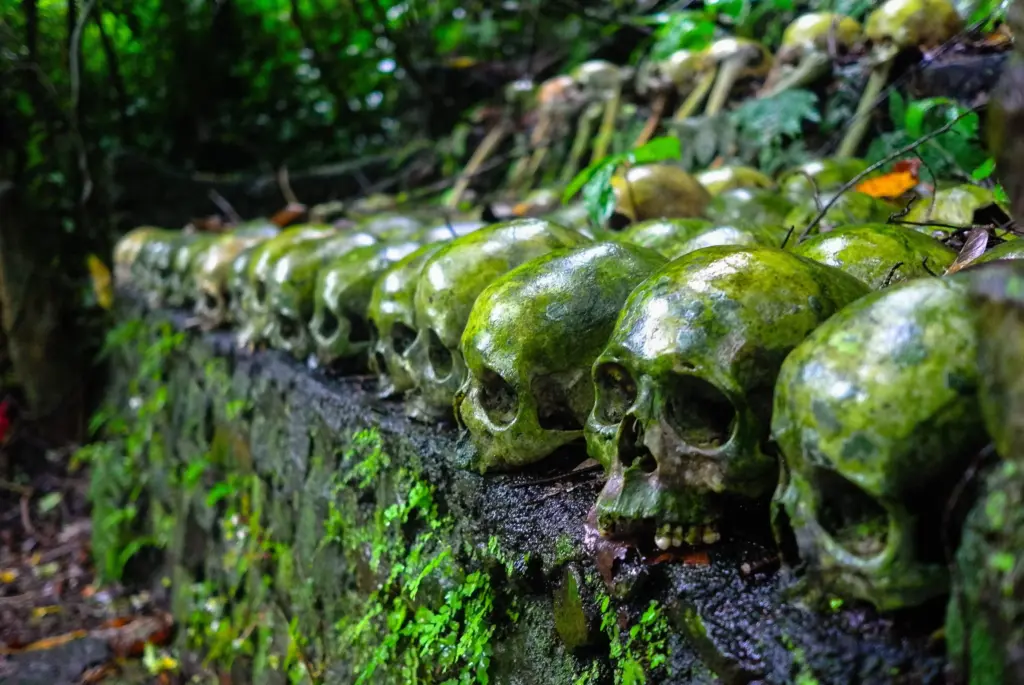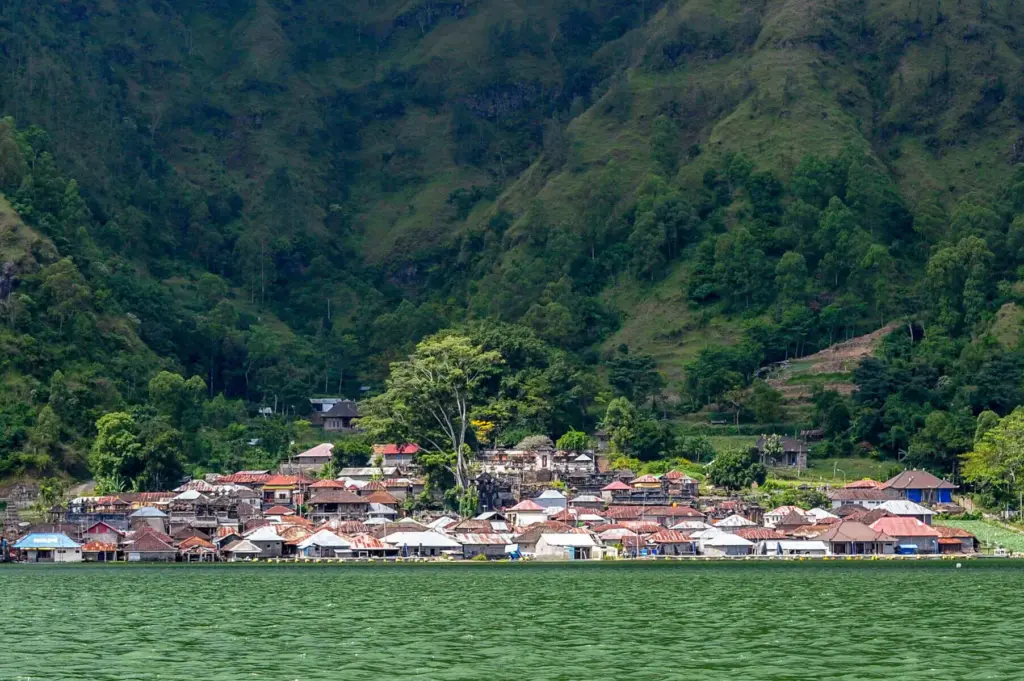Remote Bali Aga village on Lake Batur, known for its unique open-air burial and deep tradition.
On the eastern shore of Lake Batur, hidden beneath the shadow of Mount Abang, lies Trunyan, a Balinese village unlike any other. Isolated, deeply traditional, and known for its rare funerary customs, Trunyan offers a rare window into an ancient culture that predates much of Bali’s mainstream Hinduism. It is not a place of souvenir shops or beach clubs – it is a place of still water, quiet rituals, and a way of life that has remained remarkably unchanged for centuries.
The Journey to Trunyan
Trunyan is located in Kintamani, in Bali’s Bangli Regency, but it is separated from the rest of the island by Lake Batur and steep caldera walls. The village cannot be reached by road. The only way in is by boat, typically departing from Kedisan Village, on the western side of the lake. From there, small wooden boats take visitors across the calm, volcanic lake to Trunyan, a journey that takes about 20 to 30 minutes. The ride itself is serene – fog often clings to the hills, and the lake reflects the surrounding cliffs and sky like a mirror.
Unique Open-Air Burial Traditions
What makes Trunyan most famous is its unique burial tradition. Unlike the rest of Bali, where cremation is the standard Hindu practice, the people of Trunyan – who are part of the ancient Bali Aga culture – do not cremate or bury their dead. Instead, bodies are placed under bamboo cages on the ground in a special cemetery known as Seman Wayah, located just north of the village. These open-air graves lie beneath a large banyan tree known as the Taru Menyan, meaning “fragrant tree.” It is said that the scent from this sacred tree naturally neutralises the smell of decomposition, allowing the bodies to rest undisturbed in the open air without offending the senses.

The cemetery is a deeply sacred site. Only certain villagers are eligible to be placed here – usually married individuals who die of natural causes. Others may be buried or handled through more conventional rituals. Visitors are allowed to see the cemetery, but only by boat and with a local guide. Skulls and bones are visible, resting on stone platforms and arranged in quiet rows beneath the tree. It is an eerie, sobering, but profoundly respectful place. This is not a tourist attraction in the usual sense – it is a living tradition, and should be approached with care, reverence, and cultural sensitivity.
Preserving Ancient Bali Aga Culture
The people of Trunyan trace their ancestry back to Bali’s original inhabitants, long before the arrival of Hindu-Javanese influence in the 11th century. They follow the Bali Aga way of life – a version of Balinese Hinduism that incorporates animist practices, strict customary law, and isolation from the outside world. Their language, architecture, and religious customs are distinct from the rest of the island. Unlike other villages where Hindu temples are everywhere, Trunyan has its own unique shrines and rituals. The community is governed by desa adat, or customary village law, and social roles are passed down through generations.
Walking through Trunyan, you will not see modern development. The homes are modest, traditional structures made of wood and stone. Offerings are laid out daily, and ceremonies are performed according to the Pawukon calendar, not the Western one. The people are friendly but reserved, especially toward outsiders. Most do not speak much English, and photography – especially of ceremonies or sacred spaces – should only be done with permission.
Visiting Trunyan: What to Expect
For those who make the journey, Trunyan offers a powerful reminder that Bali’s culture is far from uniform. It is easy to think of the island as temples, beaches, and rice fields, but there are deeper layers – older stories, different ways of life that still survive in remote corners. Trunyan is one of those corners. It is quiet, humbling, and thought-provoking.
Getting there requires some planning. Most visitors hire a driver to take them to Kintamani, then arrange a boat across the lake through the local cooperatives at Kedisan. Some tours include Trunyan as part of a day trip, but it is worth checking that the operator works with local guides. There are no hotels in the village itself, but accommodation is available in Kintamani or Toya Bungkah, which offer basic guesthouses with views of Lake Batur and Mount Batur.
While you are in the area, it is worth combining a visit to Trunyan with a stop at Mount Batur, Toya Devasya hot springs, or a sunrise hike up Mount Abang, which looks down over the lake and the village from the opposite side. But Trunyan is the place that will likely stay with you the longest. Not because it is beautiful in the conventional sense, but because it challenges your ideas of what Bali is.
This is not a beach or a temple tour. It is not Instagram-ready. It is something older, something real – a glimpse into a part of Bali that quietly resists the tides of change. Trunyan’s people do not put on a show. They simply live their lives, guided by laws, spirits, and customs passed down for generations. To visit is to bear quiet witness to that way of life – and to leave with a deeper respect for the layers of culture that shape this island beyond its resorts and postcards.
